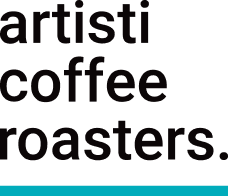Hey coffee enthusiasts! Joel from Artisti Coffee Roasters here, back behind the espresso bar. Today, we're diving into the intricate world of coffee extraction, specifically focusing on extraction defects. Our goal is to help you understand what happens during the extraction process and how to achieve a better cup of coffee.
Understanding Brew Ratios and Beyond
In the specialty coffee industry, many baristas use brew ratios or brew recipes to standardize coffee taste across cafes. This method ensures consistency and helps you get the most out of your cup. However, today, we're taking it a step further by analyzing the coffee puck post-extraction to identify defects and optimize your brewing technique.
The Basics of Coffee Extraction
When you place your coffee in the handle, tamp it flat, and start the machine, it pumps pressurized water at around 9 bars through the coffee bed. If there are any imperfections, such as air pockets or cracks, the water will find these weak points, resulting in an uneven extraction. Our ultimate goal is to ensure water flows uniformly through the coffee, avoiding over or under-extraction, which can significantly impact flavor.
Common Extraction Defects
Channeling
Channeling occurs when water finds the path of least resistance, often through cracks or air pockets in the coffee bed. This leads to uneven extraction, where some parts of the coffee are over-extracted, and others are under-extracted, resulting in a less flavorful cup.
Seal Breaks
If the seal between the coffee bed and the basket edge is broken, water bypasses the coffee, running around the edge instead of through the bed, leading to uneven extraction.
Uneven Density
Inconsistent tamping or distribution can create areas of varying density within the coffee bed. This causes water to flow unevenly, extracting more from some areas than others.
Demonstrating Poor vs. Good Technique
Poor Technique
In a demonstration, we used 22.5 grams of coffee, aiming for a 45-gram yield in 36 seconds. The extraction took only 30 seconds, with evident channeling and seal breaks in the puck. The uneven density was noticeable, impacting the coffee's flavor.
Improved Technique
Using the same grind size, dose, and tamp pressure, we improved the distribution technique. Tools like the OCD or simple finger distribution can help evenly spread the coffee in the basket. After improving distribution, the extraction time increased to 38 seconds without changing grind settings. This led to a more even extraction, better flavors, and a consistent coffee puck with no channeling.
Key Takeaways
- Distribution Matters: Proper distribution can significantly impact extraction time and coffee flavor, often more than grind size adjustments.
- Observe the Puck: Analyzing the coffee puck post-extraction can reveal defects and guide you to improve your technique.
- Experiment and Adjust: Don't rely solely on grind adjustments. Experiment with distribution techniques to achieve your desired extraction time and flavor profile.
By mastering your distribution technique, you can avoid common extraction defects, achieve your desired brew recipe, and extract the best flavors from your coffee. Next time you're dialing in your grinder, pay close attention to these details for a consistently excellent cup of coffee.










